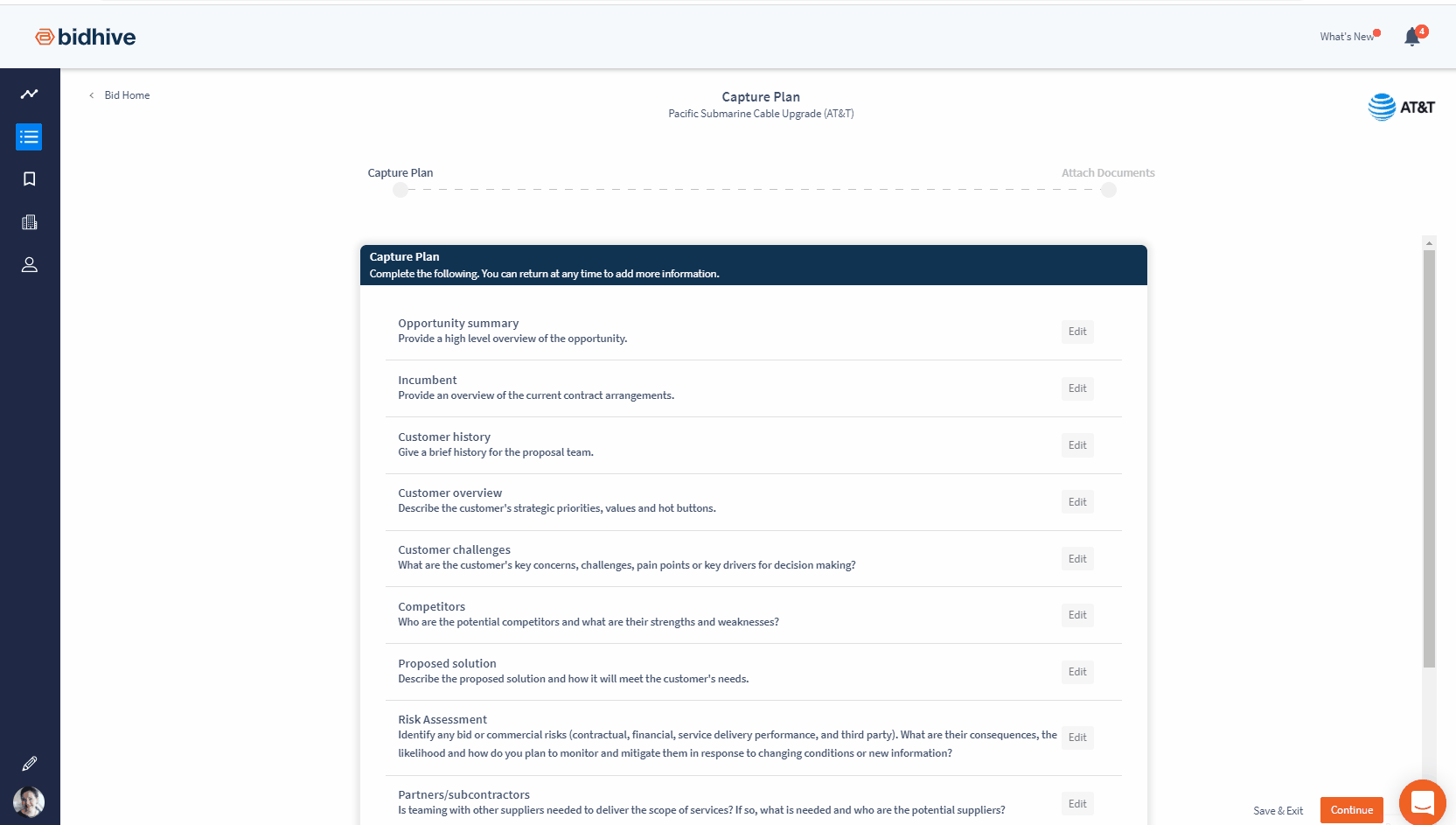The Capture Process – Preparing to bid
Why is it important?
Comprehensive planning and preparation is a feature of all successful bids and should be undertaken long before the formal request document or invitation (RFx) is issued. Proactively capturing capture intelligence to create a living, dynamic record of your customers’ hot buttons, your competition, and your proposed solution ensures your bid response meets customer requirements and is compelling.
Capture Planning is an opportunity-specific process following the pursuit decision milestone (full support by corporate leaders is critical to capture process success), and continues in parallel with proposal planning and preparation until the opportunity is awarded.
Capture process objectives
The purpose of a Capture process is to:
- Identify and qualify opportunities, including risk assessment
- Develop a win strategy – document your understanding of the customer problem, value adding solutions, price to win, and any capability requirements needed to pursue and win the opportunity
- Transfer intelligence of the customer, the specific opportunity, and the competition, to the proposal team
- Identify, analyse and mitigate contract performance risk as perceived by the customer.
Essential tools
The power of research
Often, the people you do business with are not always the ones who evaluate the bid. If you prepare a bid full of assumptions it can result in low evaluation weighting scores that can compromise the overall outcome. Being informed and having accurate information will enhance your chances of success.
TIP: Never assume you know exactly what a customer needs. Research their industry, their company and competitors. Use the knowledge of your sales team or other customer-facing staff who are active in the sector or know the customer well to obtain as much intelligence as you can.
A Capture Plan is a living, dynamic record of customer and opportunity insights that supports informed decision-making at all levels of the company and for every opportunity. The plan is ideally prepared by customer-facing individuals or teams (sales or account management teams) – and can be tailored according to the expected contract value, the procurement timeline and the strategic value of the opportunity to your organisation.
In large organisations a Capture Manager is a dedicated role responsible for positioning the business to win larger-scale programs of work and secure opportunities offering strategic avenues for growth. In smaller companies, the capture process is often skipped, which places the proposal team under extreme pressure to deliver a competitive offer under severe time pressure. A capture plan saves time and money, and has also found to improve retention rates.
The Capture Plan contains customer insights, identifies issues, scopes the solution and captures ideas from people that would otherwise get ‘lost’ within and across organisational silos. Including the business development, marketing, sales and subject matter experts in on the Capture process allows you to respond better and faster once the RFx is released.
By capturing knowledge of the customer’s business issues and needs, long-term goals and short-term objectives, you will be in a great position to:
- Create compelling win themes that connects with your evaluators.
- Develop a clear value proposition (the argument on why choose your organisation) which is consistent and logical.
- Be convincing and show that your company has the capacity, capability and experience to help the customer achieve their objectives.
Remember, customers outsource for a reason, and the general reason is that there are problems or issues to be solved which they believe are better handled by an outside ‘expert’. If you can demonstrate that you can help the customer achieve their goals, then you will leave a better impression than a competitor submitting a weak solution with little thought process behind it.
Key elements of a Capture Plan
- A situation analysis that documents and describes the present status (the opportunity);
- It analyses the customer needs and problems to be addressed (hot buttons);
- It scopes the initial the solutions to address the problems or needs; and
- Briefly describes what the customer has done previously, or is planning to do, to address the problem.
Capturing evidence
There are two main types of research that you should consider incorporating into your Capture Plan (and your bid response) to make for a strong selling proposition to the customer:
- Quantitative data – source information such as statistics and market share. Quantitative data, while supplying easily digested facts about your share of market or success rates can provide evidence of your track record.
- Qualitative – using information gained through relationships with the customer or market. Examples include citations from customer listening feedback sessions, focus groups and third party endorsement through case studies, testimonials and media mentions. Qualitative data can provide a more complete picture by providing the reasons why you have a superior service.
All good researchers will combine both kinds of data to provide the most strategic and significant tender response.
The Bidhive default Capture Plan tool provides the starting point on which you can build your own Capture Plan for every qualified opportunity.
TIPS on what to include in your Capture Plan:
Customer and market insights could cite research reports or provide links to strategic plans, annual reports, regional plans, community stakeholder plans and/or media stories
Market intelligence into whether the opportunity is market driven or policy driven, probable decision makers, issues or risks perceived by the customer, budgets, previous history of the relationship (stakeholder and competitor perceptions), and previous debrief feedback and lessons learned
Positioning strategies could highlight unique selling points that differentiate you from the competition (draw upon previous won/lost bid data, previous track record/methodologies in your Content Library)
Important action items that need to happen before the proposal schedule can be prepared, such as investment, additional resources, teaming strategy or MoUs signed.

Other topics
Pre-bid
- Bid Opportunity Management
- The Capture Process
- Bid/No Bid Decision
Bid
Post-bid





